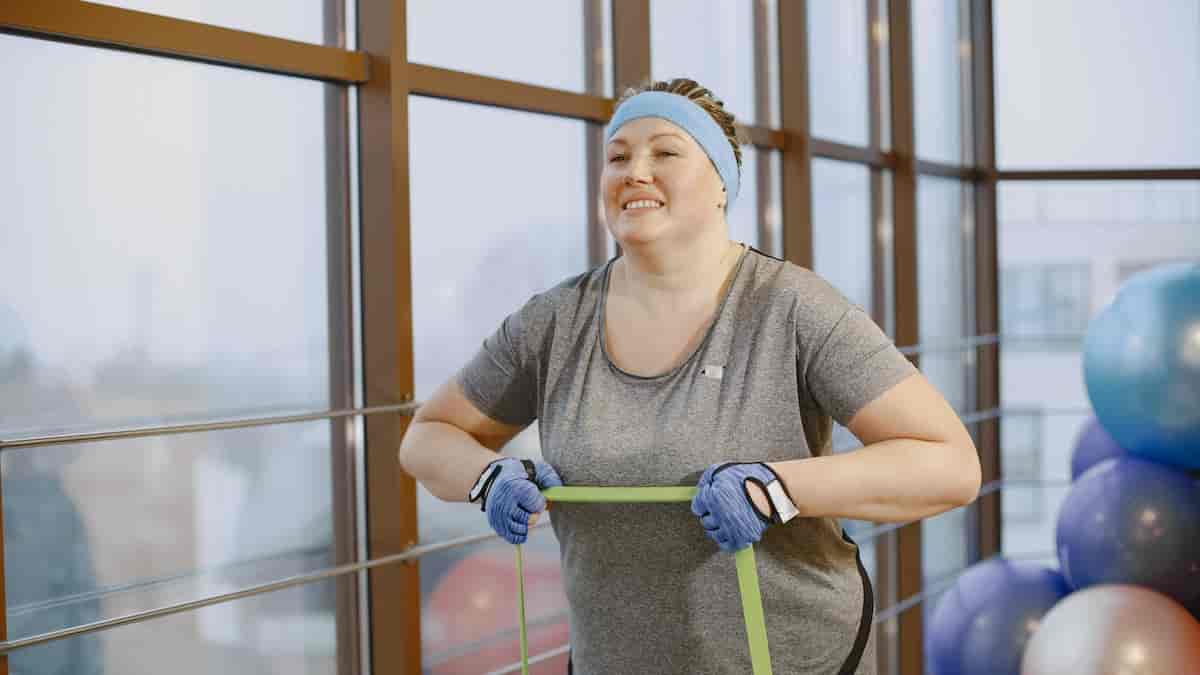Here is your complete guide to body fat percentages women.
Introduction to Body Fat Percentages Women
Welcome to our comprehensive guide on body fat percentages for women. Understanding body fat percentage is crucial for maintaining optimal health and well-being. In this article, we will explore the different aspects of body fat percentages, including healthy ranges, factors affecting them, measuring methods, and tips for maintaining a healthy body fat percentage. So, let’s dive in! So how to calculate body fat percentages women? What do you need to know about body fat percentages women? Here is your complete and ultimate guide to body fat percentages women. So let’s explore the body fat percentages women.
Understanding Body Fat Percentages Women
Body fat percentage refers to the proportion of fat tissue in the body compared to other components, such as muscle, organs, and bones. It plays a vital role in women’s health, affecting hormone regulation, reproductive functions, and overall body composition. There are two types of body fat: essential fat and storage fat. Essential fat is necessary for normal bodily functions, while storage fat provides insulation and energy reserves.
Healthy Body Fat Percentages Women
Maintaining a healthy body fat percentage is important for women’s overall well-being. The ideal body fat percentage ranges can vary based on age, fitness level, and personal goals. Here are the general categories and recommended ranges for women:
| Body Fat Percentage Category | Recommended Range |
|---|---|
| Essential Fat | 10-13% |
| Athletes | 14-20% |
| Fitness | 21-24% |
| Average | 25-31% |
| Obese | 32% and above |
It’s important to note that these ranges are not absolute, and individual variations exist.

Factors Affecting Body Fat Percentages Women
Several factors influence body fat percentages in women. Understanding these factors can help in managing and maintaining a healthy body fat percentage. Here are some key factors to consider:
- Genetics: Genetic predispositions can affect how your body stores and distributes fat.
- Hormones: Hormonal changes during different life stages, such as puberty, pregnancy, and menopause, can impact body fat percentage.
- Age: Body fat percentage tends to increase with age due to a decrease in muscle mass and metabolic rate.
- Diet and Nutrition: The quality and quantity of food intake play a significant role in body fat percentage.
- Physical Activity: Regular exercise and physical activity help in managing body fat percentage by promoting muscle growth and fat loss.
Measuring Body Fat Percentages Women
Accurately measuring body fat percentage can be done through various methods. Here are some commonly used techniques:
- Skinfold Calipers: This method involves measuring skinfold thickness at specific sites on the body using calipers.
- Bioelectrical Impedance Analysis (BIA): BIA measures body fat percentage by sending a low electrical current through the body.
- Dual-Energy X-ray Absorptiometry (DEXA): DEXA scans provide a detailed analysis of body composition, including bone density and fat distribution.
- Air Displacement Plethysmography (ADP): ADP, also known as the Bod Pod, uses air displacement to measure body composition.
- Hydrostatic Weighing: This method measures body density by weighing a person in and out of water.
Each method has its pros and cons, so it’s important to choose one that suits your needs and resources.
BMI vs. Body Fat Percentages Women: Which is a Better Measure of Health?
Determining whether BMI (Body Mass Index) or body fat percentage is a better measure of health depends on the specific context and individual goals. Let’s explore the differences and considerations for each measurement:
Body Mass Index (BMI)
BMI is a commonly used measurement that estimates body fat based on height and weight. It provides a general assessment of weight status and is often used in population studies. However, it has limitations when it comes to evaluating individual health.
Pros of BMI: Body Fat Percentages Women
- Simplicity: Calculating BMI involves a straightforward formula using height and weight.
- Population Studies: BMI is useful for evaluating health trends in large groups and identifying population-level risks.
Cons of BMI: Body Fat Percentages Women
- Limited Accuracy: BMI does not consider variations in body composition, such as muscle mass and distribution, which can lead to misleading results.
- Incomplete Health Assessment: BMI does not provide information about fat distribution, muscle mass, or overall body composition, which are important factors for health.
- Individual Variations: Different individuals with the same BMI can have vastly different body fat percentages and health profiles.
Body Fat Percentage
Body fat percentage measures the proportion of fat in relation to lean mass in the body. It provides a more accurate assessment of body composition and health, as it takes into account variations in muscle mass and fat distribution.
Pros of Body Fat Percentage: Body Fat Percentages Women
- Comprehensive Assessment: Body fat percentage considers the distribution of fat and muscle mass, providing a more accurate understanding of body composition.
- Health Risk Evaluation: High body fat percentage, particularly excess visceral fat, is associated with an increased risk of various health conditions, including cardiovascular diseases and metabolic disorders.
Cons of Body Fat Percentage: Body Fat Percentages Women
- Measurement Complexity: Determining body fat percentage accurately requires specialized equipment or techniques, such as skinfold calipers, DEXA scans, or bioelectrical impedance devices.
- Accessibility: These measurement methods may not be readily available or affordable for everyone.
Choosing the Right Measurement
The choice between BMI and body fat percentage depends on the specific goals and context. If you are looking for a quick, general assessment of weight status at a population level, BMI can be a useful tool. However, if you are focused on individual health, body fat percentage provides a more comprehensive picture.
For a more accurate assessment, it’s beneficial to consider both measurements alongside other health indicators, such as blood pressure, cholesterol levels, physical fitness, and overall well-being. Consulting with a healthcare professional or registered dietitian can help interpret these measurements in the context of your individual health and guide you toward appropriate lifestyle interventions if necessary.
Ultimately, it’s essential to prioritize overall health, including factors such as physical activity, balanced nutrition, and overall well-being, rather than solely relying on a single measurement.

The Role of Nutrition in Body Fat Percentage
Maintaining a healthy body fat percentage requires a balanced diet. Here are some tips for managing body fat through nutrition:
- Caloric Balance: Create a caloric deficit or surplus based on your goals to encourage fat loss or muscle gain, respectively.
- Macronutrient Distribution: Consume a well-balanced diet that includes an adequate amount of proteins, carbohydrates, and healthy fats.
- Portion Control: Pay attention to portion sizes to avoid overeating and maintain a healthy caloric intake.
- Whole Foods: Focus on whole, nutrient-dense foods like fruits, vegetables, lean proteins, whole grains, and healthy fats.
- Hydration: Stay adequately hydrated as it supports overall health and helps regulate appetite.
Gender Differences in Body Fat Percentage: Explained
The disparity in body fat percentage between women and men can be attributed to several biological and physiological factors. Let’s delve into some of the key reasons why women tend to have a different body fat percentage compared to men:
Hormonal Influences
Hormonal differences play a significant role in shaping body fat distribution between genders. Women naturally have higher levels of estrogen, a hormone that promotes the storage of fat, particularly in areas such as the breasts, hips, and thighs. This is often referred to as the “female pattern” of fat distribution. In contrast, men tend to have higher levels of testosterone, which encourages fat storage in the abdominal region, commonly known as the “male pattern” of fat distribution.
Evolutionary Factors
Evolutionary biology also contributes to the divergence in body fat percentages. Historically, women have played a crucial role in reproduction and childbearing, requiring a higher percentage of essential fat for optimal fertility and pregnancy. The presence of higher body fat percentage in women ensures the availability of energy reserves for supporting reproductive functions and providing nourishment during pregnancy and breastfeeding.
Metabolic Variances
Metabolism, including basal metabolic rate (BMR) and fat metabolism, can differ between women and men. On average, men tend to have a higher BMR and greater muscle mass due to higher levels of testosterone. Muscle tissue is metabolically more active than fat tissue, leading to increased calorie expenditure even at rest. Consequently, men generally have a higher capacity for burning calories and may have a lower body fat percentage compared to women.
Social and Cultural Factors
Sociocultural influences also contribute to the variation in body fat percentages. Beauty standards, cultural norms, and societal expectations often shape perceptions of an ideal body shape for women. These factors can influence body image and may contribute to differences in body fat distribution, as individuals strive to conform to prevailing beauty ideals.
It’s important to note that these explanations provide a general understanding of gender differences in body fat percentage, but individual variations exist within each gender. Genetics, lifestyle, physical activity levels, and dietary habits can also influence body fat distribution and overall body composition.
Understanding and appreciating these biological and sociocultural factors can help promote body positivity and encourage individuals to focus on overall health, including balanced nutrition, regular physical activity, and self-acceptance, rather than striving for a specific body fat percentage.
Exercise and Body Fat Percentage
Regular exercise is an essential component of managing body fat percentage. Here are some exercise tips to promote fat loss and improve body composition:
- Cardiovascular Exercise: Engage in activities such as jogging, cycling, swimming, or dancing to burn calories and stimulate fat loss.
- Strength Training: Incorporate resistance exercises to build muscle, increase metabolism, and improve body composition.
- High-Intensity Interval Training (HIIT): Alternate between high-intensity bursts and recovery periods to boost calorie burn and fat loss.
- Compound Exercises: Include compound movements like squats, deadlifts, lunges, and push-ups to work multiple muscle groups simultaneously.
- Consistency: Stick to a regular exercise routine and gradually increase the intensity and duration for long-term results.
Maintaining a Healthy Body Fat Percentage
Sustaining a healthy body fat percentage requires commitment and lifestyle changes. Here are some strategies to help you maintain your progress:
- Goal Setting: Set realistic and achievable goals to stay motivated and track your progress effectively.
- Consistency: Adopt healthy habits and make them a part of your daily routine.
- Accountability: Find a workout partner, join fitness classes, or hire a personal trainer to stay accountable and motivated.
- Lifestyle Modifications: Make small changes like taking the stairs instead of the elevator, walking instead of driving short distances, and reducing sedentary activities.
- Self-Care: Prioritize self-care activities like quality sleep, stress management, and relaxation techniques to support overall health and well-being.
Determining an Optimal Body Fat Percentages Women
The ideal body fat percentage for women can vary depending on various factors, including age, fitness level, and personal goals. It’s important to note that body fat percentage preferences may differ based on individual preferences and desired physique. However, here are some general guidelines to consider:
Healthy Range: Body Fat Percentages Women
For most women, a healthy body fat percentage typically falls within the range of 25-31%. This range allows for essential fat storage and supports overall health and reproductive functions. It provides a balance between maintaining sufficient energy reserves and minimizing the risk of excessive fat accumulation, which is associated with various health concerns.
Athletes and Fitness Enthusiasts: Body Fat Percentages Women
Athletes and highly active individuals often aim for lower body fat percentages to enhance performance and showcase muscle definition. In these cases, body fat percentages may range from 14-20%. However, achieving and maintaining such low body fat percentages requires dedicated training, nutrition, and guidance from healthcare professionals or sports nutritionists.
Individual Considerations
When determining a good body fat percentage, it’s essential to consider individual factors such as body composition, muscle mass, and overall health. Some women naturally have higher or lower body fat percentages due to genetic predispositions or other factors. Additionally, personal goals, body shape preferences, and overall well-being should be taken into account.
It’s important to approach body fat percentage goals with a focus on overall health rather than solely fixating on a specific number. Prioritize a balanced lifestyle that includes regular physical activity, a nutritious diet, and positive self-image. Consultation with healthcare professionals, registered dietitians, or fitness experts can provide personalized guidance and support in setting and achieving appropriate body composition goals.
Remember that individual variation exists, and what matters most is feeling confident, strong, and healthy in your own body rather than conforming to arbitrary standards. Embrace the journey towards overall well-being and body positivity.
Read More About Fruit with High Protein.
Frequently Asked Questions (FAQs) about Body Fat Percentages Women
What is the ideal body fat percentage for women?
The ideal body fat percentage for women varies based on factors such as age, fitness level, and personal goals. On average, a healthy range is between 25-31%. However, athletes may have lower percentages in the range of 14-20%.
Read More About Push Ups Workout for Chest.
Can body fat percentage be reduced only through exercise?
While exercise plays a significant role in reducing body fat percentage, it is equally important to focus on nutrition and create a caloric deficit. A combination of regular exercise and a balanced diet yields the best results.
Read More About Bodyweight Exercise for Women.
Is it possible to spot reduce body fat in specific areas?
Spot reduction is a common myth. Fat loss occurs throughout the body, and it’s not possible to target specific areas for fat reduction. A consistent exercise routine and a healthy diet can lead to overall fat loss.
Read More About Best Exercises for a Big Back.
How long does it take to see changes in body fat percentage?
The rate at which changes occur varies from person to person. With a consistent exercise routine and a balanced diet, noticeable changes in body fat percentage can occur within a few weeks to a couple of months.
Read More About How to Workout Lower Chest.
Can body fat percentage increase with age?
Yes, body fat percentage tends to increase with age due to factors such as a decrease in muscle mass, hormonal changes, and a decrease in metabolic rate. However, regular exercise and a healthy lifestyle can help manage and prevent excessive fat gain.
Read More About Bodyweight Exercise for Biceps.
What does 25% body fat on a woman look like?
Body fat percentages can vary in how they appear on different individuals. At 25% body fat, a woman may have a softer and less defined appearance compared to lower body fat percentages. There might be some visible fat around the midsection, hips, and thighs. However, it’s important to remember that everyone’s body composition is unique, and factors such as muscle mass and distribution can also influence how body fat is visually perceived.
Read Alos: Benefits from Mangoes.
Is 20% body fat high for a woman?
A body fat percentage of 20% is considered within a healthy range for women. At this level, a woman’s physique may have a lean and toned appearance with some visible muscle definition. The body fat is generally evenly distributed throughout the body, and there may be slight contours around the midsection. However, it’s essential to keep in mind that body fat percentage preferences can vary based on personal goals and individual body composition.
Read More About Do Black Coffee Have Calories?
What does 30% body fat look like?
At 30% body fat, a woman may have a softer and less defined appearance compared to lower body fat percentages. There might be more noticeable fat deposits around the midsection, hips, thighs, and possibly the arms. However, it’s important to remember that everyone’s body composition is unique, and factors such as muscle mass and distribution can also influence how body fat is visually perceived.
Read More About Green Coffee for Weight Loss.
Is 10% body fat good for a woman?
Maintaining a body fat percentage of 10% can be quite challenging for most women and is typically more common among elite athletes. This level of body fat is often associated with a highly defined and muscular physique, with visible muscle striations and very minimal fat deposits. However, it’s crucial to note that such low body fat percentages may not be sustainable or healthy for all women. It’s important to prioritize overall health, balance, and individual body composition rather than solely focusing on achieving a specific body fat percentage.
Read More About Nutrition 1 Cup Broccoli.
Conclusion
In conclusion, understanding and managing body fat percentages are essential for women’s overall health. By following a balanced diet, engaging in regular exercise, and adopting a healthy lifestyle, you can achieve and maintain a healthy body fat percentage. Remember, progress takes time and consistency, so stay committed and celebrate small victories along the way. Here’s to a healthier you!

